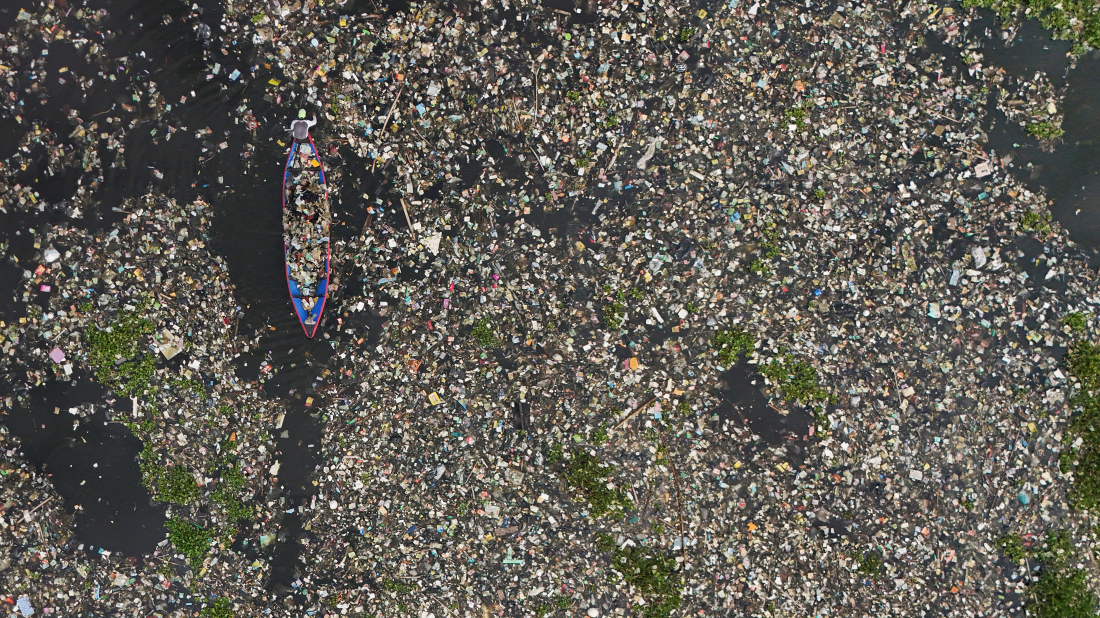France moves to prevent government shutdown after budget talks collapse
France’s government is moving to pass emergency legislation to keep the state operating into January after lawmakers failed to agree on a 2026 budge...

Plastic waste leakage in Southeast Asia, plus China, Japan and South Korea, could rise by nearly 70% by 2050 without stronger policies, according to a new OECD report.
The Regional Plastics Outlook says plastics use in the region is on track to almost double compared with 2022 levels, driven by rising incomes and living standards. ASEAN member states are expected to see a near tripling.
Plastic waste is projected to more than double, while leakage into the environment could grow by 68%, mostly from ASEAN lower-middle-income countries and China. In 2022, 8.4 million tonnes of mismanaged plastic waste entered the environment.
The report calls the region a “hotspot for plastic pollution”, noting that regional plastic waste grew from 10 million tonnes in 1990 to 113 million tonnes in 2022. Informal and unsafe practices, including open burning and dumping, remain widespread in rural areas of ASEAN countries and China.
Annual leakage could reach 14.1 million tonnes by 2050, with 5.1 million tonnes entering rivers, coastal areas and oceans. Over half of the plastics used in the region have a lifespan of under five years, becoming waste quickly.
The OECD says ambitious actions such as bans on single-use plastics and taxes could cut plastic use by 28%, raise recycling rates to 54%, and reduce mismanaged waste by 97%.
Talks on a legally binding global treaty on plastic pollution resumed in Geneva on Tuesday, after previous negotiations in South Korea collapsed last year amid disagreements over curbing production and improving waste management.
Vince Zampella, co-creator of the Call of Duty gaming franchise, has died in a car crash involving a Ferrari crash on Monday in Los Angeles, United States.
Israeli Prime Minister Benjamin Netanyahu said Israel is monitoring recent Iranian military exercises and will raise the issue with U.S. President Donald Trump during his visit to Washington next week.
Paramount has reaffirmed its bid to acquire Warner Bros. Discovery, offering $30 per share in cash and backing the proposal with a $40.4 billion personal equity guarantee from billionaire Larry Ellison, despite the target company’s board urging shareholders to reject the offer.
U.S. President Donald Trump has approved plans to construct a new class of battleships, which he described as larger, faster and significantly more powerful than any previous U.S. warship.
As the European Commission warns of possible visa suspension, Georgian authorities reject accusations of democratic backsliding. What is really at stake — and who could be affected most?
Dense smog has forced authorities in Pakistan’s Punjab province to shut several major motorways on Tuesday (16 December), stranding commuters as visibility dropped sharply and Lahore’s air quality reached hazardous levels.
At least 37 people have been killed in flash floods triggered by torrential rain in Morocco's Atlantic coastal province of Safi, Moroccan authorities said on Monday (15 December).
Climatologists say Poland has logged its warmest December in 74 years, with 2025 continuing a run of above-average temperatures and repeated national records.
As the world marks the tenth anniversary of the Paris Agreement, progress in combating global climate change is mixed.
An extratropical cyclone has caused widespread disruption across Brazil’s São Paulo state, with powerful winds toppling trees and power lines, blocking streets and leaving large parts of the region without electricity.
You can download the AnewZ application from Play Store and the App Store.

What is your opinion on this topic?
Leave the first comment